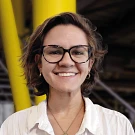Como é que se verificam 900 parafusos ou 700 peças moldadas por injeção por minuto quanto a danos? Quem se colocar esta questão encontrará a resposta correta na Gefra GmbH. Fundada em 1995, a empresa é especializada no desenvolvimento de sistemas automatizados para a inspeção e medição ótica rápida e precisa de componentes.
As máquinas Optisort da Gefra GmbH utilizam a tecnologia de câmaras em conjunto com alimentação automática e sistemas informáticos muito rápidos. Para a inspeção, os provetes são alimentados individualmente pelas câmaras através de um tapete rolante. Também são possíveis inspecções de 360° com quatro câmaras. Finalmente, as peças boas são ativamente ejectadas e as peças defeituosas são separadas.
Tudo isto acontece a uma velocidade que o olho humano mal consegue acompanhar. Os sistemas inspeccionam várias centenas de peças por minuto, por vezes mais de 50.000 peças por hora.
Com o desenvolvimento contínuo dos sistemas, até a mecânica, ou seja, o sistema de alimentação, atingiu os seus limites devido à elevada velocidade. Mas a velocidade de computação também atingiu o seu limite. Afinal de contas, o sistema tem de analisar os dados de oito ou dez câmaras e tomar decisões em milissegundos.
Para otimizar ainda mais os sistemas, a iluminação foi redesenhada para colocar os provetes à luz certa para as câmaras. A distância entre as luzes e o provete de ensaio varia consoante o produto e, anteriormente, exigia o ajuste manual das luzes utilizando uma roda de ajuste com uma escala.
Por conseguinte, o processo tinha de ser integrado no programa, tornando-o automatizado e reproduzível. Um critério crucial para a tecnologia linear necessária para este efeito era o de poder trabalhar completamente sem lubrificantes. Os accionamentos não devem emitir quaisquer substâncias estranhas que possam prejudicar o processo de teste. Afinal de contas, as unidades de iluminação estão localizadas diretamente acima, ao lado e abaixo dos objectos a inspecionar. O carácter compacto das unidades de acionamento era igualmente importante. Como o ajuste elétrico é oferecido como opção, deve ser possível integrá-lo no design existente. E, finalmente, toda a unidade com motor, carro e montagem deve ser fornecida pronta para instalação a partir de uma única fonte.






